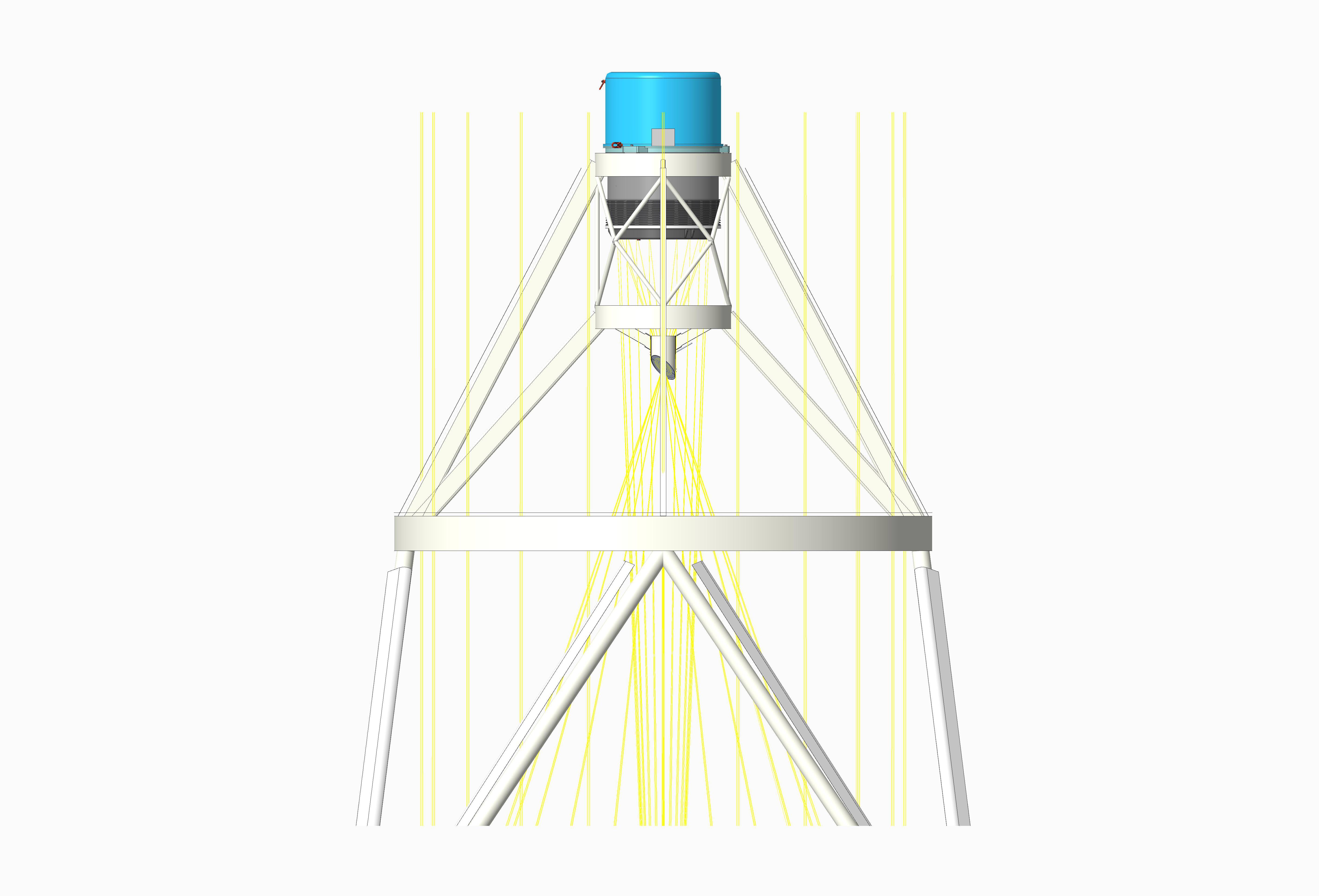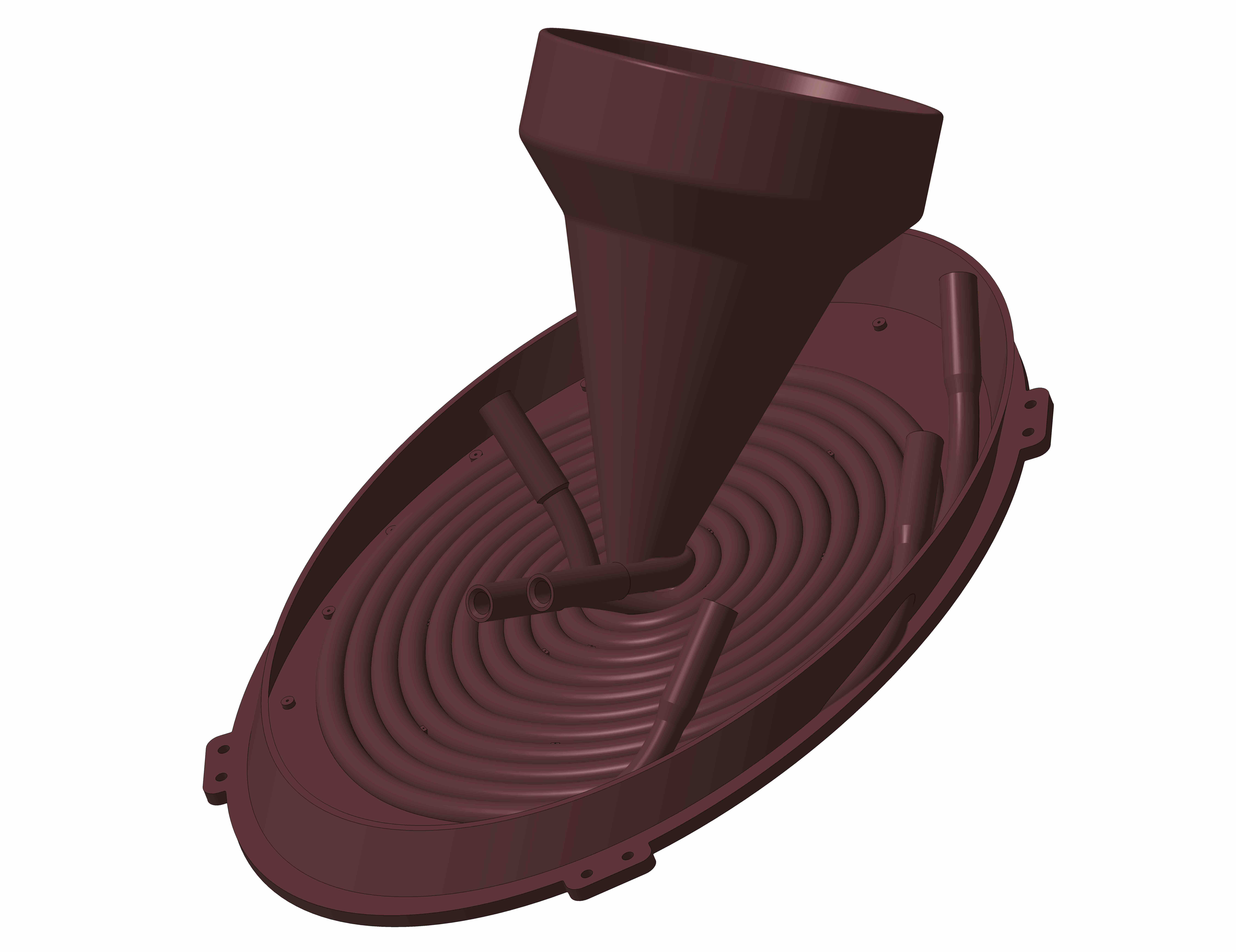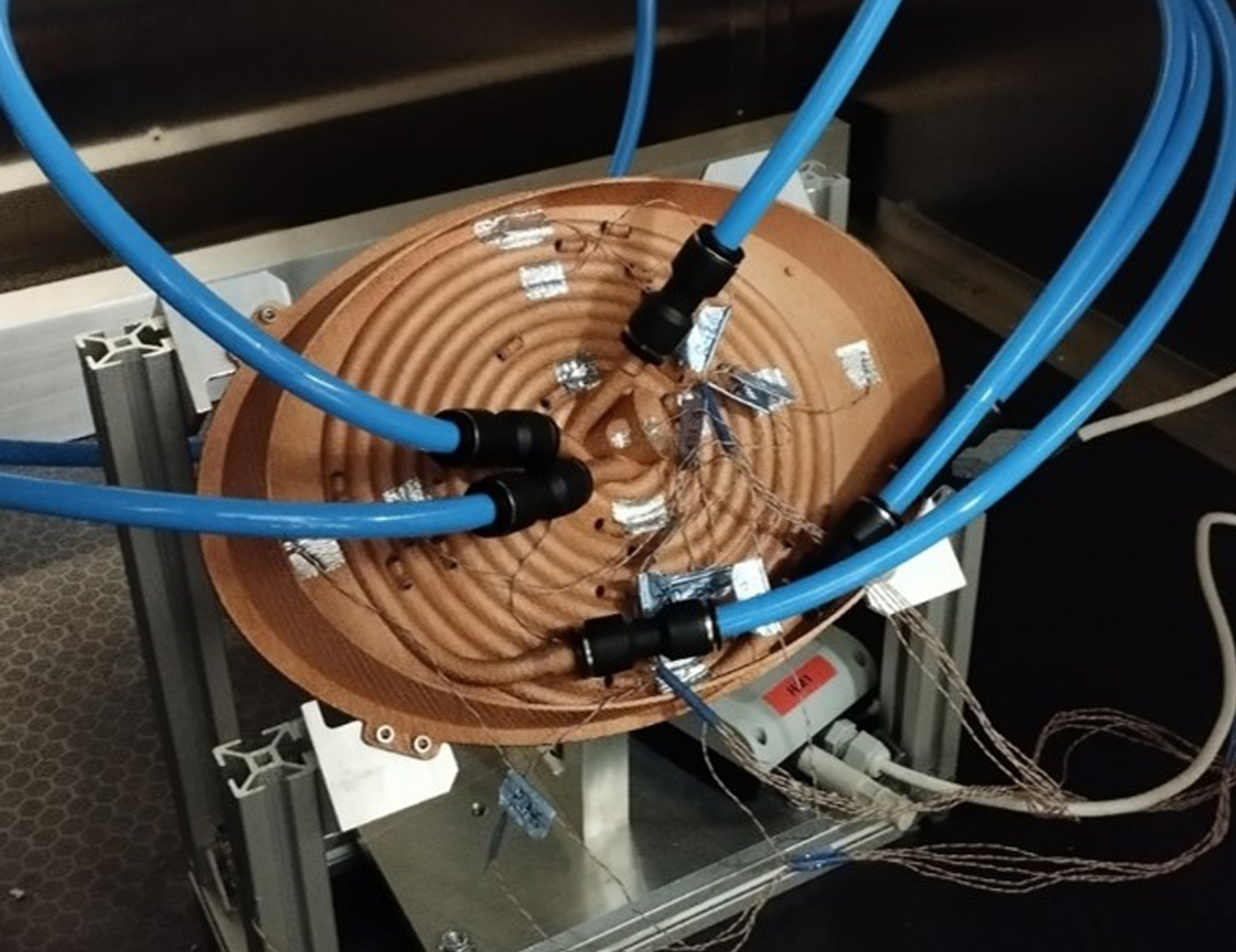Heat Rejecter
The EST Heat Rejecter (HR) is a flat mirror located at the prime focus of the telescope with a central hole that acts as the first field stop of the entire optical system (Figure 1). The purpose of this essential element is to reject the solar radiation from outside of the selected field of view (FOV), preventing the formation of thermal plumes, controlling local seeing degradation, and lowering the direct radiation load on the other optical subsystems of the telescope.
The use of an HR is possible because EST operates in open configuration. During the observations, the enclosure is retracted, which allows the excess radiation to be directed out of the telescope in any telescope pointing position.
Solar radiation generates a total thermal load on the HR of about 14 kW, assuming a 95% reflectivity for the primary mirror (M1). The FoV required by the instruments is 127 arcsec. The FOV is limited in the secondary focus and the HR reduces it to 246 arcsec. Therefore, if the HR has an absorptivity of ~15%, it receives a heat density of 460 kW/m2.
The cooling system required to remove this heat load must be designed to avoid the formation of air turbulence in the optical path due to the temperature increase on the heated surface of the HR. If necessary, the cooling system will be combined with an air suction system to avoid hot air plumes at all times. Furthermore, the surface temperature of the HR mirror must be maintained within a temperature deviation of ±3 ºC from the ambient air during observation.
Figure 2. Preliminary design of the HR assembly without part of the casing to show the interior. Credit: CiTD.
The HR baselined in the preliminary design is a cooled copper flat mirror with a serpentine cooling system in the backside (Figure 2). The coolant, Dynalene HC-20, will circulate at 2 ºC below the ambient temperature. The HR will include sensors to monitor and control the mirror surface temperature. Furthermore, it will be able to detect the position of the sun, triggering an alarm to the global EST control system if the sun moves out of the HR for any reason, as this could cause damage to other parts of the telescope without refrigeration.
Figure 3. Rendering and HR prototype during laboratory testing. Credit: EST PO.
In the preliminary design contract, a thermal prototype was developed to verify the key requirements for the correct operation of the HR. This prototype has been fabricated in copper at scale 1:1, using additive manufacturing (see Figure 3).




